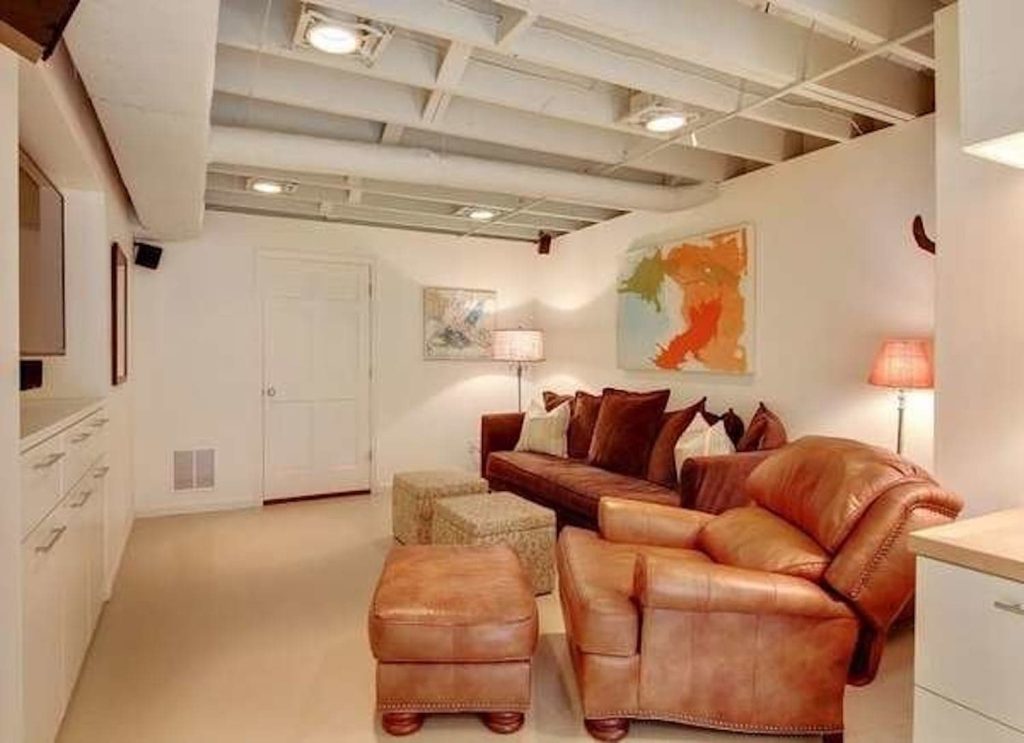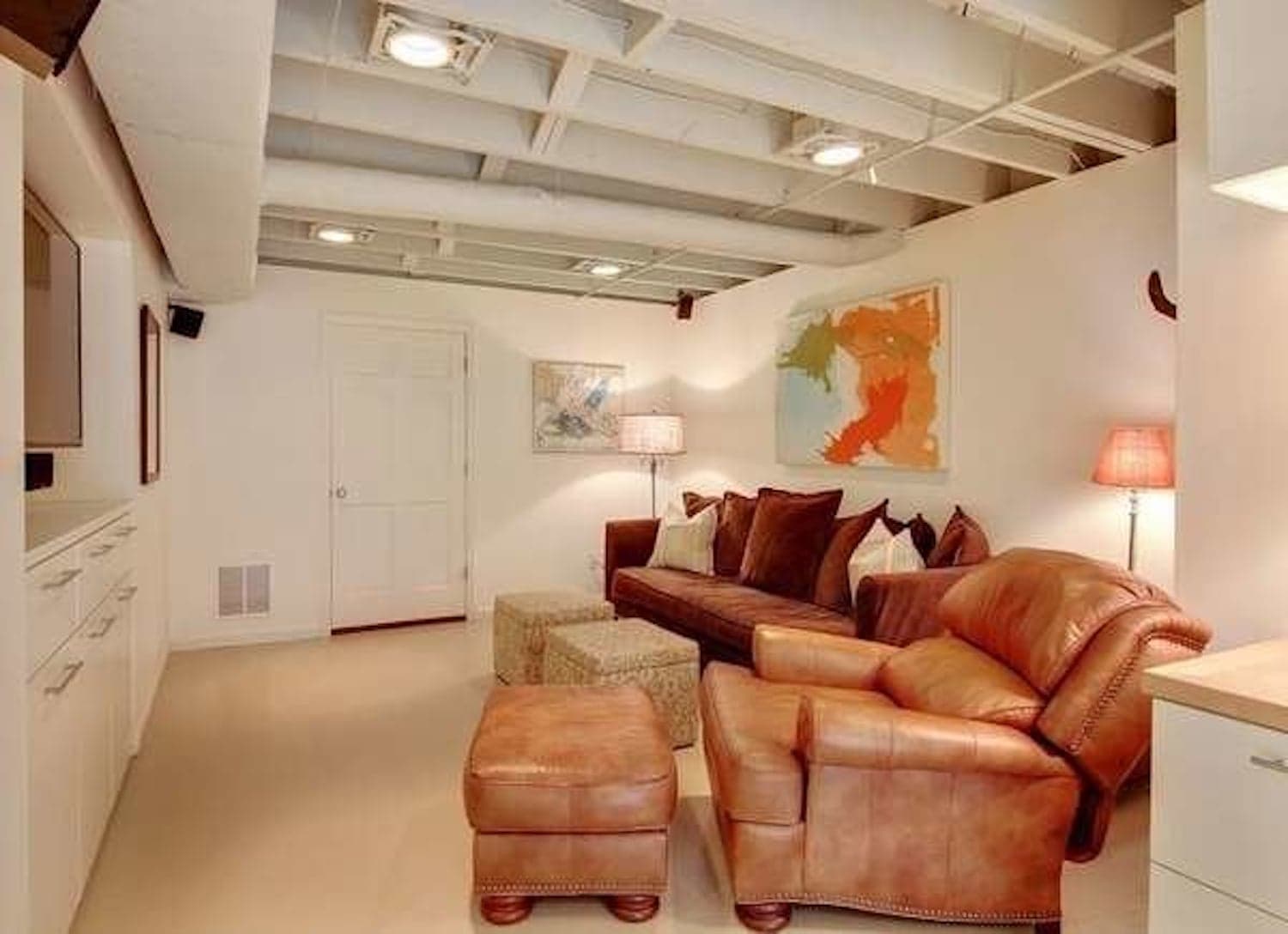A low ceiling in your basement doesn’t mean you have to sacrifice the opportunity to create a functional and inviting living space. In this comprehensive guide, we’ll explore the process of “Finishing a Basement With a Low Ceiling,” providing you with practical tips and creative solutions to make the most of your limited overhead space.

Challenges of Finishing a Basement With a Low Ceiling
Before diving into the solutions, let’s understand the challenges you might face when finishing a basement with a low ceiling:
- Limited Headroom: A low ceiling can restrict headroom, making it essential to maximize space while maintaining comfort.
- Inadequate Lighting: Insufficient natural light in the basement can make the space feel dark and confined.
- Air Circulation: Proper air circulation becomes crucial in basements with low ceilings to maintain a comfortable atmosphere.
- Design Considerations: Your design choices need to account for the limited vertical space to ensure functionality and aesthetics.
Tips for Finishing a Basement With a Low Ceiling
- Plan Carefully: Start with a well-thought-out plan that considers the basement’s purpose, such as a home theater, playroom, or guest bedroom. Tailor the design to your specific needs.
- Choose the Right Flooring: Opt for low-profile flooring options like vinyl, laminate, or carpet tiles. These materials add comfort without reducing headroom significantly.
- Lighting Strategy: Incorporate a mix of lighting options, including recessed LED lights, wall sconces, and floor lamps. Ensure they’re strategically placed to brighten the space evenly.
- Color Palette: Use light and neutral colors for walls and ceilings to create an open and airy feel. A monochromatic color scheme can visually expand the space.
- Furniture Selection: Pick low-profile and space-saving furniture to enhance the sense of openness. Modular and multifunctional furniture can be especially useful.
- Wall Mirrors: Mirrors can create the illusion of a larger space by reflecting light and adding depth.
- Ceiling Treatments: Consider ceiling treatments like beadboard, coffered ceilings, or paintable wallpaper to add interest and draw the eye upward.
- Built-Ins: Custom built-ins, like shelving and cabinetry, can maximize storage and provide a tailored look to your basement.
- Open Shelving: Open shelves can offer storage while keeping the space visually open. They can be used for decorative displays and organization.
- Multi-Purpose Rooms: Create flexible spaces that can serve multiple purposes, such as a combination of a home office and guest bedroom.
Air Circulation and Ventilation
- HVAC System: Ensure your heating, ventilation, and air conditioning (HVAC) system is efficient and balanced to maintain a comfortable temperature.
- Dehumidification: Consider a dehumidifier to control moisture levels, which is crucial for basement spaces.
- Proper Insulation: Adequate insulation can help maintain a comfortable environment and control energy costs.
Rea too: Is Installing A Ceiling Fan Hard
Permitting and Codes
Before embarking on your basement finishing project, check local building codes and permits. Some areas may have specific requirements for basement renovations, especially when adding bedrooms or bathrooms.
Conclusion
Finishing a basement with a low ceiling can be a rewarding project that adds valuable living space to your home. By planning carefully and implementing the right design and space-saving strategies, you can create a functional, comfortable, and visually appealing basement that overcomes the challenges of limited overhead space. Whether you’re aiming to build a cozy home theater, a playroom for the kids, or a versatile guest bedroom, a well-finished basement can enhance your home’s value and provide a comfortable retreat for your family and guests.
